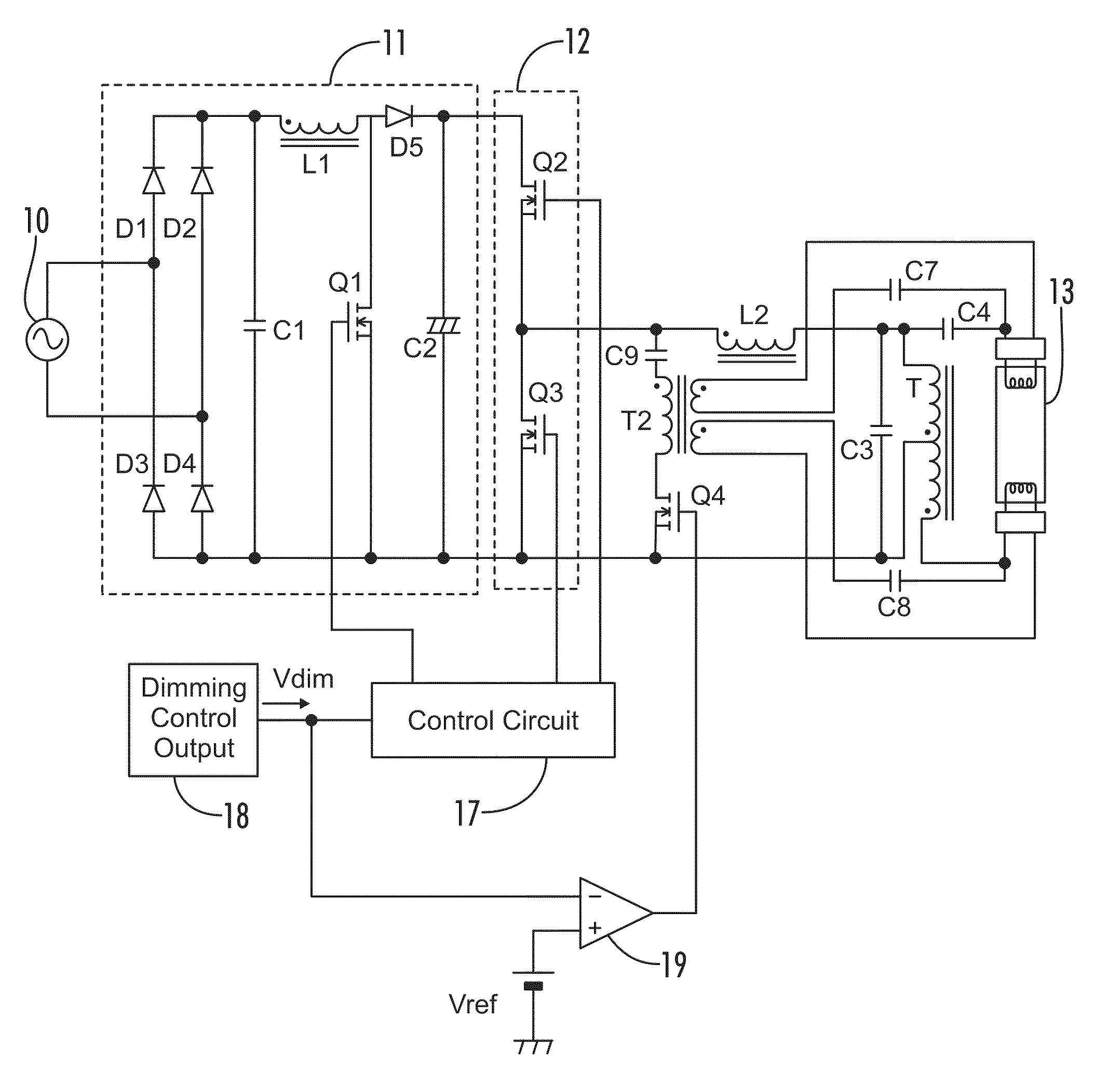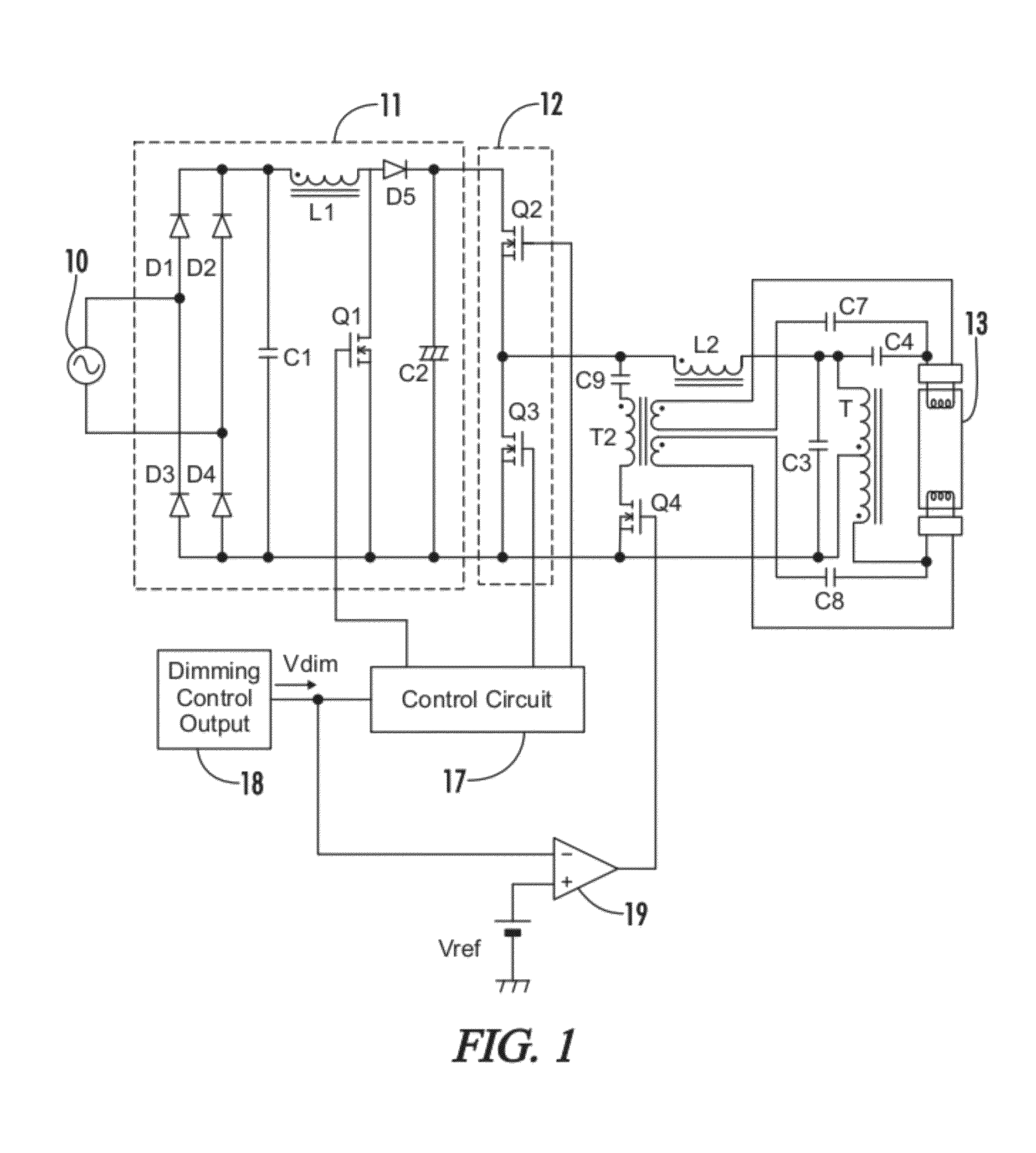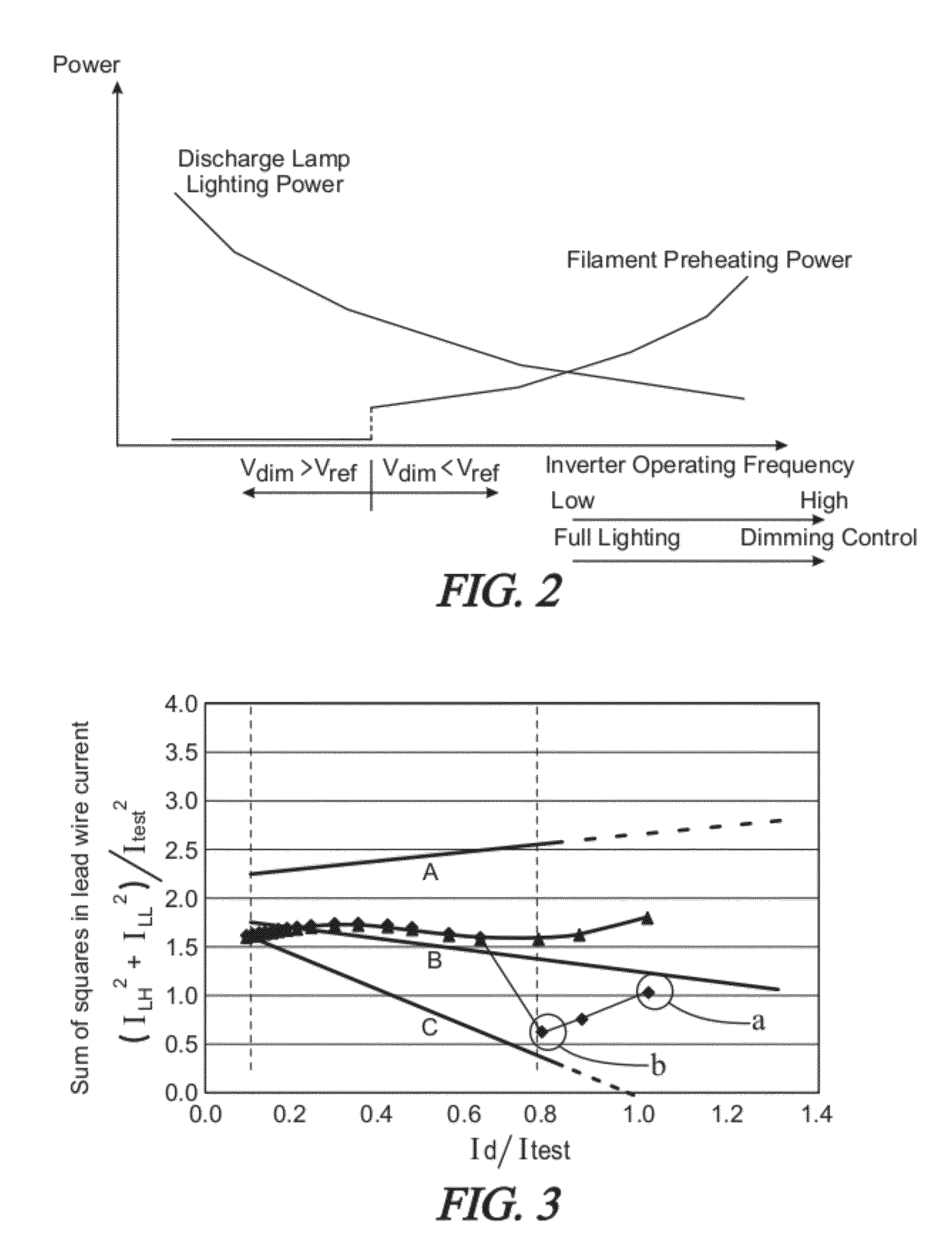Dimming electronic ballast with preheat current control
a technology of electronic ballast and control current, which is applied in the field of electronic ballast, can solve the problems of affecting the life of lamps, difficult circuit design, and inability to contribute to light output, so as to prevent the short life of lamps, reduce the effect of power consumption and efficient conversion
- Summary
- Abstract
- Description
- Claims
- Application Information
AI Technical Summary
Benefits of technology
Problems solved by technology
Method used
Image
Examples
Embodiment Construction
[0056]Shown in FIG. 1 is a circuit configuration of an electronic ballast according to a first embodiment of the invention to explain the configuration and operation thereof.
[0057]In this embodiment, an AC voltage of 100V and 50 / 60 Hz supplied from a commercial power source 10 is rectified to a DC voltage with a peak value of about 141V by a diode bridge including diodes D1 to D4. The DC voltage is stepped up by a step-up chopper circuit including a choke coil L1, a transistor Q1 and a diode D5. Obtained at both ends of an electrolytic capacitor C2 connected to an output end of the step-up chopper circuit is a DC voltage of, for example, about 300V. This DC voltage is converted into high frequency power in a subsequent inverter 12 and used as lighting power for a discharge lamp 13.
[0058]The inverter 12 has a half bridge inverter circuit including serially connected transistors Q2 and Q3, and provides a high frequency rectangular wave voltage at a connection point between the switchi...
PUM
 Login to View More
Login to View More Abstract
Description
Claims
Application Information
 Login to View More
Login to View More - R&D
- Intellectual Property
- Life Sciences
- Materials
- Tech Scout
- Unparalleled Data Quality
- Higher Quality Content
- 60% Fewer Hallucinations
Browse by: Latest US Patents, China's latest patents, Technical Efficacy Thesaurus, Application Domain, Technology Topic, Popular Technical Reports.
© 2025 PatSnap. All rights reserved.Legal|Privacy policy|Modern Slavery Act Transparency Statement|Sitemap|About US| Contact US: help@patsnap.com



